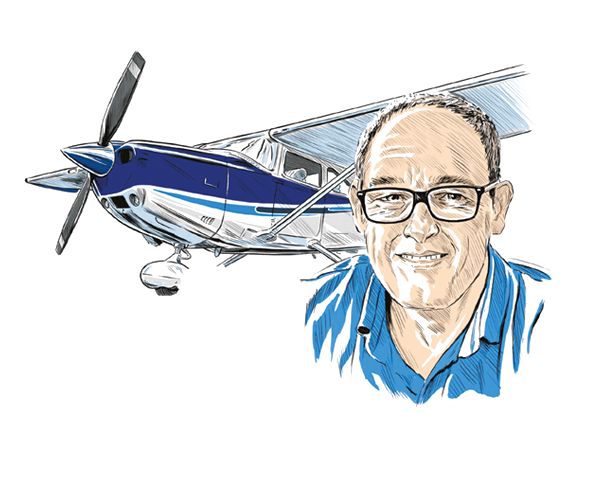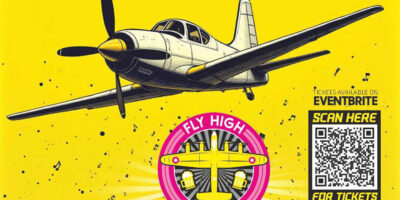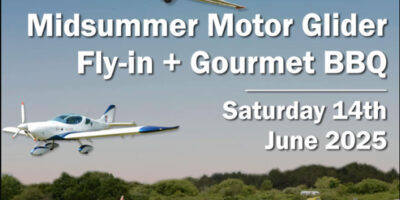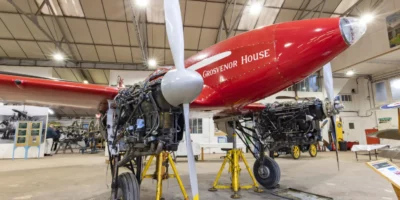I don’t like writing about fatal accidents. I particularly don’t like writing about recent fatal accidents where all of the available facts have yet to be established and verified. But. I’m going to do it anyway, and depending on how it goes, I might end up asking for forgiveness at the end.
When news broke recently of a triple fatality following a mid-air collision, YouTubers, safety organisations and General Aviation pilots reached for their cameras and keyboards and offered their thoughts to people who hadn’t yet asked for them. Yes, I am aware of the rich irony – save your stones until the end and, if you think they still need to be thrown, then by all means, fill your boots.
Three people lost their lives when a Cessna 340 collided with a Cessna 152. Both aircraft were landing at Watsonville, an uncontrolled airport in California, and both aircraft were on final. From the RT (available through liveatc.net) we know that the C152 was flying circuits at Watsonville and the C340 was inbound from the east. It had departed Turlock Municipal, just over 60nm away. The C152 made the circuit calls you would expect, the C340 announced he was on a straight-in approach at ten, three and one mile.
According to ADS-B data from the C340 (none was available from the C152) the speed never dropped below 179kt. That’s way too fast, and close to twice the speed of previous straight-in approaches flown at that airport by the C340. At something like 200ft, it appears that the C152 was struck from behind by the C340 just after the C152 pilot transmitted “…gonna go around because you’re coming at me pretty quick man…”
“People will always do stupid or dangerous things, but we can (largely) control how we fly, react, and deal with evolving situations”
There are more questions than answers. Who had the right of way? What do FAA regulations say about joining the circuit at an uncontrolled field? Why was the C340 pilot doing 180kt or more when on final for a 4,500ft runway? Did the C340 pilot really intend to make a full-stop landing, as his radio call suggests? How did the C152 pilot see the C340? Was the C152 equipped with a traffic display or (more likely) have access to traffic information through an iPad app? Etc.
Along with me, most people reading this, as well as those commenting publicly, are probably wondering just what the twin’s pilot was doing? The C340 is a heavy and slippery aircraft, flying it by the book means the first stage of flap can go down at 160kt with the gear following at 140kt. Unless those numbers had been ignored, the aircraft would have been not only way too fast but not configured for landing either, when he called a one mile final. A successful landing off that approach was going to be a challenge.
A lot of people are pointing the finger at the C340’s pilot. It’s hard, well impossible, to argue that under normal circumstances a high speed straight-in approach to an uncontrolled airport with circuit traffic is the best of plans, but of course we don’t – and may never – know what was going on in the C340’s cockpit or its pilot’s mind.
The point is, seeing fingers being pointed and the blame being apportioned worries me. Not the holier than thou ‘we should wait until all the facts are known’ kind of thing, but because the comfort we get when we believe ‘it’s someone else’s fault’ can then get in the way of any lessons to be learned about avoiding a similar fate in the future.
We’ll never stop people doing silly, stupid and / or dangerous things, but we can (largely) control how we fly, how we react, and how we deal with evolving situations. Most of the online discussion (and there’s been a lot) has been about who was to blame. I get that, but putting yourself in the cockpit of both accident aircraft, and asking yourself what and how you would have done things differently, regardless of the actions of the other aircraft would, I think, be better for safety and a positive thing to come out of this and other tragedies. Apportioning blame can get in the way of learning.








2 comments
If you consider another pilot to be thoughtless stay out of the way of that pilot.
I basically agree with the above. I learnt at Leavesden in a Tomahawk at 90kts but was also lucky as it was the era when PPLs could P2 the KingAirs which taught me an enormous amount including if I heard a KingAir on the radio making a straight in, if I was in the circuit with right of way, forget that. He was bigger, faster, more expensive and the safest option was keep out of the way… as one day we had to do on the taxiway at Heathrow for Concorde guzzling a gallon a second to taxi.
The only bit of Ian’s I am not over comfortable with is saying something is too fast. Speeds need to mix and hitting someone from behind at 10-20 kts faster is fatal. A friend of mine lost his life at Cranfield some 30+ years ago on finals mixing with microlights in his PA28 at the LAA rally. He probably was too fast for them?
I like to learn when an incident happens, not months and months later after the AAIB report comes out with all the facts and can be missed. Reminders now is better in my view.
Again when I was taught at Leavesden, yes full ATC, but it was the standard radio call “G-BGRX go around, I say again go around, not below 400ft and keep the runway in sight on your left at all times.” That may just of saved the day here an no of course you don’t know much an 10’s + 10’s of hours total. Another pilot said to me years ago it’s no good being dead on cloud ( saying I should not be hear it was not my fault! The more you try and think what another pilot might just do hopefully is one of the odds in your favour of staying safe.